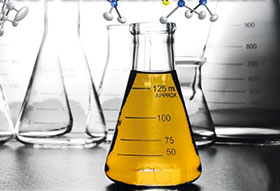

In addition to keeping equipment in optimal shape, modern day lubricants can also contribute to lower energy consumption, faster cleanup and less hazardous waste. Filter Focus COO, Craig FitzGerald says that when a piece of heavy industrial equipment fails, the cost is usually far greater than merely replacing damaged parts. The danger to workers and the downtime that the failure may bring can be crippling.
He explains that lubricants perform many essential functions in machinery, including cooling, transferring power, reducing friction, preventing wear and tear and minimising deposits and contaminants. Components break down and wear is inevitable with any machinery, but using superior lubricants designed specifically for the equipment in use and the job at hand can prevent the wear of parts. Visual inspection of components, coupled with planned maintenance and a log of when a machine’s parts were last lubricated, will keep costs down and efficiency up.
“Our involvement in implementing comprehensive lubrication and filtration programmes in a number of industries has resulted in massive cost savings, as well as major reductions in energy and oil consumption and less machine failures,” Fitzgerald says. “What is little understood is that all lubricants are contaminated, it is just the levels of contamination that differ, and this is no different with brand new, unused oils. The role of lubricants in contamination management is critical, as abrasive dust and wear particles constantly build up in the machinery, regardless of the preventive measures taken. This highlights the need for effective lubricants and micro-fine bypass filtration as an essential part of the maintenance programme.”
Scoring and pitting of metal components in high stress parts of industrial equipment increase the risk of operational failure and downtime. FitzGerald says that a high performance lubricant can help heal the gear surface.
“With open gears, for example, high film strength and film thickness of the lubricant redistribute the load over the surface area of the gears. This ultimately evens out to a point of equilibrium and results in a healed gear appearance, where smaller pits often close up completely,” he continues.
He adds that large open gear systems at mines, power and cement plants have been using antiquated lubricants, causing a loss in production and increase in energy consumption. This has been regarded as normal and acceptable, hence the continued use of asphaltic grease. “High pollution as well as build-up of hardened lubricants in the roots of the gears made housekeeping an ongoing issue. However, with advances in lubrication, wear protection of gears has risen as dust and slurry contamination can no longer penetrate the lubricant film thickness, cutting component replacement and downtime costs immensely.”
Lower energy consumption
He mentions several cases where energy usage by large mill motors at industrial plants was measured before and after conversion by Filter Focus. “The savings in electrical consumption were significant. When you consider that the annual electricity bill for open gear applications is one of the largest operating costs for an industrial plant, the temperature reduction of 15°C that we achieved during the conversion process is incredible. Essentially, we provide the customer with the ability to do more with less.”
In another case study, a mine’s mill drive motor historically operated at between 5,4 and 5,6 MW. After conversion, there was a reduction to between 4,8 and 5 MW. “This kind of saving adds considerably to a company’s bottom line,” he continues.
The reduction in costs doesn’t end with energy, though. “When we converted a ball mill to an enhanced lubricant, we safely reduced lube consumption from 800 to 80 kg per month. That’s a 90% reduction in usage and 8640 kg less lubricant to dispose of every year. The saving in lubricants can be easily calculated in rands and cents, but the environmental responsibility is immeasurable,” FitzGerald explains.
A recent project has seen Filter Focus help Sasol Synfuels achieve a production increase of 18% while also reducing operating and lubrication costs. “Filter Focus provides a faster, safer cleanup process, higher production and lower energy consumption, while producing less hazardous waste. These are vital aspects of environmental responsibility and compliance,” he concludes.
For more information contact Craig FitzGerald, Filter Focus, +27 (0)11 466 1268, [email protected], www.filterfocus.co.za

© Technews Publishing (Pty) Ltd | All Rights Reserved